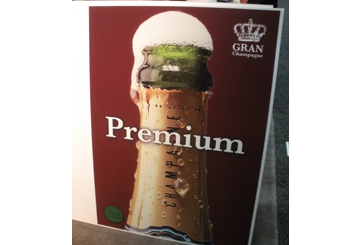 In digital printing, the equipment you have in your shop determines the type and quality of work you can produce. With this in mind, many sign shops rightly focus on finding the best digital printer to meet their needs. But once you have the printer, what about the inks?
In digital printing, the equipment you have in your shop determines the type and quality of work you can produce. With this in mind, many sign shops rightly focus on finding the best digital printer to meet their needs. But once you have the printer, what about the inks?
With the recent advancements in inks, a sign shop is faced with many more choices. Tom Sheehan, wide format ink specialist, at ink manufacturer Van Son Holland Ink, wlaks sign manufacturers through the process of choosing the right inks.
New & Old Considerations
In the past few years, printers have found themselves faced with a variety of new ink choices—eco-solvent, aqueous, UV, and even latex inks. One of the greatest benefits resulting from some of these new inks has been a lower impact on the environment. “These advancements are most noticeable in eco-solvent inks,” says Sheehan. “Many signage printers have found eco-solvent inks to be a flexible ink that can print on a variety of substrates and with little-to-no VOCs.”
Another benefit has been that the quality of ink has improved greatly—and not just on the OEM side. Third-party inks have also seen an increase in quality and compatibility with printers. “Many sign shops have been led to believe that third party inks will damage their machines by clogging heads or pumps. This is a misconception,” says Sheehan. “Today, third party inks are manufactured to perform equal to, if not better than, manufacturer ink. A quality third-party ink manufacturer will honor any warranty that has been voided by using their ink.”
Indoor & Outdoor Considerations
Determining whether a print will be an indoor/outdoor installation can help a printer narrow down his ink choices.
For outdoor applications like banners, environmental elements, and the distance from the viewer are all factors that need to be considered.
Outdoor banners can be exposed to extreme temperatures, rain, snow, etc., so inks that will last are necessary. “When selecting an ink for outdoor banners, we recommend an ink with a long life expectancy,” says Sheehan. “The preferable ink is eco-solvent or solvent ink due to their strong durability.”
Aside from a durable ink, printers may also think lamination is necessary, which isn’t always the case. “Typically these banners will be made of vinyl, which helps pigments bind to the material. Lamination is not necessary because the ink can withstand rain and other outdoor elements on its own,” says Sheehan.
Outdoor banners and typically further away from the intended viewer, which should dictate a lower resolution on the print. “Banner and graphics that are not close to the viewer do not need to be printed at such a high resolution because viewers will be too far away to notice,” says Sheehan.
On the other hand, banners installed indoors are usually much closer to the viewer. “Banners and graphics that will be close the viewer should be printed with a water-based ink and printed at a high resolution,” says Sheehan. “Printing at a high resolution is especially important when printing graphics and photos.”
Water-based (aqueous) inks are recommended because of their ability to print at a high resolution. However, Sheehan warns to be wary of their consistency, “It is important to select an ink for water-based printers with a good consistency that will not clog heads or pumps.”
As with other banners, lamination is not always necessary. “We would not necessarily advise lamination for a typical indoor banner because they will not be exposed to rain or other weather conditions that could cause damage,” says Sheehan.
The choices for inks are now almost as varied as the colors printers can reproduce. When purchasing equipment for a digital print shop or department, a sign shop owner should never forget to keep ink considerations at the forefront of his mind.











